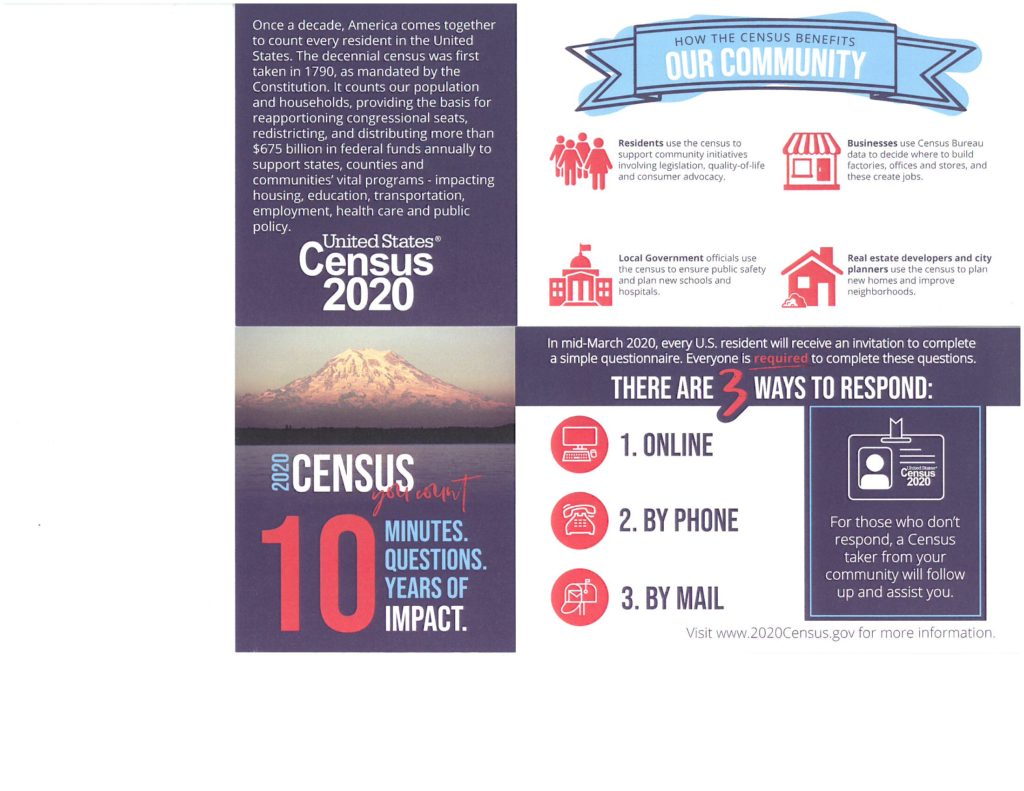A U.S. Census local enumerator and field supervisor ride a snowmobile in Toksook Bay, a remote Alaska Native village where the once-in-a-decade count began on Jan. 21. Most households will receive an invitation by mail to participate in the Census between March 12-20. Census workers will visit homes with nontraditional addresses, where at-home mail delivery isn’t an option.
Workers will visit tribal homes with nontraditional addresses
U.S. Census workers traveled to the remote Alaska Native village of Toksook Bay to begin the once-a-decade count on Jan. 21.
“The 2020 Census is critically important. No matter where you live, you need to be counted,” U.S. Census Bureau Director Steven Dillingham said in a news release. “From the most remote parts of our country to the most urban, there is too much at stake — we are working to make sure everyone can respond and have the opportunity to shape their communities’ future.”
The U.S. Constitution mandates that a census of the population be conducted every 10 years. Census statistics are used to determine the number of seats each state holds in the U.S. House of Representatives and inform how billions of dollars in federal funds will be allocated by state, local, and federal lawmakers every year for the next decade.
Toksook Bay is a village located on Nelson Island along the Bering Sea in southwestern Alaska. Census takers must get a head start in rural, remote areas like Toksook Bay when the ground is frozen and prior to the spring thaw, when residents leave to fish, hunt and seek out warm-weather jobs.
“We have been working to prepare for this count since before 2018 and are happy to see the first count of the 2020 Census begin in our village. Through this historic occasion we have shared with the Census Bureau our traditions and our culture,” said Robert Pitka, Nunakauyak tribal administrator said in a news release. “The 2020 Census ensures our traditions and our people are marked in history. The census is so important because it helps remote villages like ours receive important community resources now and into the future.”
Reaching tribal homes with nontraditional addresses
More than half of households on tribal lands across the country have nontraditional addresses where the Census Bureau can’t mail a census form. With no at-home mail delivery and a short window to respond before seasons change, receiving an invitation this way would be nearly impossible for remote Alaska residents. This is why the Census Bureau worked with Alaska Native leaders to determine the best way to count people living on their lands. In Toksook Bay and other remote areas of Alaska, census takers will visit people at home and will fill out their questionnaire in person.
Locally, Census Bureau officials are working with the Puyallup Tribal Census Complete Count Committee to help prepare for the upcoming count on the Puyallup Reservation. The committee’s goal is to increase awareness about the Census, and how it can affect funding for tribal programs.
This is the first year that people can participate in the count online, by phone, or by mail. Invitations to respond will reach most of the estimated 145 million households across the country between March 12 and March 20.
For more information about the 2020 Census, visit 2020census.gov.






